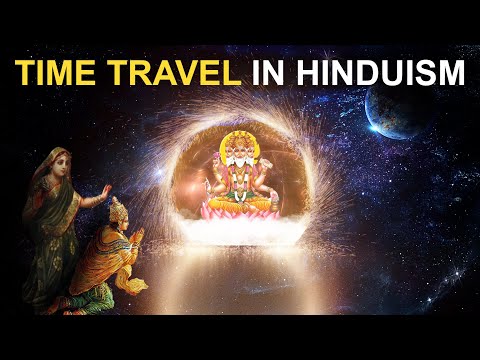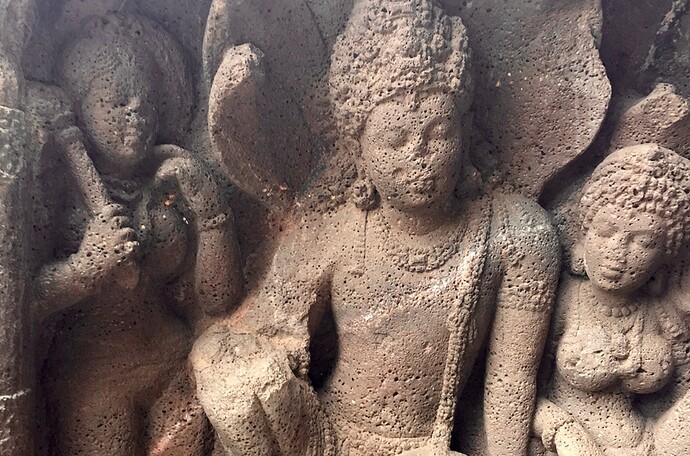Folks , the Vedic texts had described Soma - a drink that imparted immortality to Gods and even men who consumed it...the same was called "Homa" in the Avesta of the Zorastrians in ancient Persia . An incredible discovery was recently made that the legendary Soma/Homa drink was brewed from some form of mushroom :-
How Russian scientists cracked the secret of a Vedic ritual drink
JAN 09 2017
RAKESH KRISHNAN SIMHA
An Indra idol at the Ajanta Caves in Maharashtra. Indra enjoyed consuming Soma, according to ancient Indian texts.
Here’s a toast to the explorers and archaeologists who discovered the plant used to produce the drink of the ancient Indians.
One of the most mysterious drinks in the history of tipple is Soma – a drink of ritual importance to the ancient Indians. Drinking Soma was supposed to confer immortality, with the two leading gods Indra and Agni portrayed as consuming it in copious quantities.
The consumption of Soma by ordinary humans is attested in Vedic ritual. The Rig Veda, which was composed more than 5000 year ago, says: “We drank soma, we became immortal, we came to the light, we found gods.” The Iranians call it Hoama in the sacred Avesta.
Although the descendants of the ancient Hindus and Zoroastrians continue to perform their age-old rituals, the identity of the plant from which Soma was extracted or fermented was lost.
Non-psychoactive substitutes came to be used in place of the elusive Soma. Over the past 200 years, a number of candidates have been put forward, including cannabis, rhubarb, ginseng, opium and wild chicory.
Soma detectives
However, Russian archaeologists may have solved the puzzle. In 2009, while digging at a deep burial chamber in the forests of Mongolia, a Russian-Mongolian expedition from the Institute of Archaeology and Ethnography, Siberian Branch of the Russian Academy of Sciences (SB RAS) discovered embroidered woollen textiles dating back two millennia.
Although the archaeologists’ work is not yet complete, the first fragments restored have revealed some stunning facts. The fragments of the textile found were parts of a carpet composed of several cloths of dark-red woollen fabric.
It had made quite a journey – the cloth was spun in Syria or Palestine, embroidered in north-western India and ended up in Mongolia. The discovery is nothing less than miraculous because of its improbability.
Natalia V. Polosmak, Chief Researcher, SB RAS, writes: “Finding it 2000 years later is a pure chance; its amazingly good condition is almost a miracle. How it made its way to the grave of a person it was not meant for will long, if not forever, remain a mystery.”
The embroidery depicts an ancient Zoroastrian ceremony centred around a mushroom. In the middle of the composition, to the left of the altar is the king or priest, who is dressed in a smart, long embroidered kaftan gaping open at the bottom. He is focused on the mushroom in his hands.
Polosmak says the “divine mushroom” resembles the well-known psychoactive species psilocybe cubensis. “The weight of evidence suggests that soma, the ancient ritual drink, has been prepared from the mushrooms of family strophariaceae which contains the unique nervous system stimulator psilocybin.”
All researchers agree that ancient Indians and Iranians used for cult purposes a drink containing a psychoactive substance. The debate is about the identity of the drink and how it affected the consciousness of those who consumed it.
Story of the carpet
According to Polosmak, the men depicted on the carpet are either of Indo-Scythians (Saka) or Indo-Parthian stock. They are performing a ritual that indicates they acknowledge a form of Zoroastrianism – proof of this is the symbol of Ahura Mazda, the god of the Iranians, represented by the sacred fire altar.
The mushroom that the king (or priest) is holding in his hands can be an offering to the fire or it can be sanctified by the fire before being used to make the sacred drink.
“The north-western India of that time, where, in all the likelihood, the ritual is taking place, was the meeting place of three ethnos, three cultures – Indian, Iranian, and Greek. Each of them had their own gods: tolerance and worshipping not only of one’s own but also of alien gods was a common thing.”
Polosmak explains further: “To get to the root of the consecration unfolding before us, we should pay attention to such seemingly insignificant details as depictions of bees and butterflies strewn all over the cloth. These insects are the most ancient symbols of worship, and used to have meanings very different from the present one.”
The bee was the symbol of honey, Indra, Vishnu and Krishna. The Atharva Veda – the fourth and last Veda – compares spiritual pursuit with honey making. The antiseptic properties of honey made it critical while preserving some foodstuffs. In Mexico, for example, honey has long been used to preserve mushrooms containing psilocybin.
The butterfly too had connotations of longevity. In Greek mythology, a butterfly personified the goddess of the soul, Psyche. The Greek word psyche means both soul and butterfly. In fine arts, a soul was often depicted as a butterfly either flying out of a funeral fire or travelling to Hades. The word soul often means “divine fire”.
“The butterflies and bees depicted in the background of the canvas may have symbolised the kingdom of souls – the Other World – the world of ancestors, where the warriors got to after having consumed sacred mushrooms,” says Polosmak.
“Now the puzzle fits together. The insects and the mushroom are closely connected and make the surrounding world miraculous.” Recall what the Rig Veda says: “We drank soma, we became immortal, we came to the light, we found gods.”
This brings to the prescient words of another Russian genius. Indologist and Rig Veda translator Tatiana Yelizarenkova wrote exactly a decade before the Mongolian finds: “Judging by the Rig Vedic hymns, Soma was not only a stimulating but a hallucinating drink. It is difficult to be more particular not only because none of the candidates satisfies all the Soma properties and matches the Soma descriptions found in the hymns only partially but primarily because the language and style of the Rig Vedic as an archaic cult monument reflecting the poetic features of ‘Indo-European poetic speech’ is a formidable obstacle to Soma identification. The answer may be provided by archaeologists and their finds in north-western India, Afghanistan, and Pakistan (and not in the far-away Central Asia).”
The mystery of the drink that gave immortality to the gods and vigour to the ancient Indians and Iranians has finally been solved. It remains to be seen if a clever entrepreneur will try and reverse engineer it from the recipe gleaned by Russian researchers from a 2000 year old carpet fragment.
Regards


